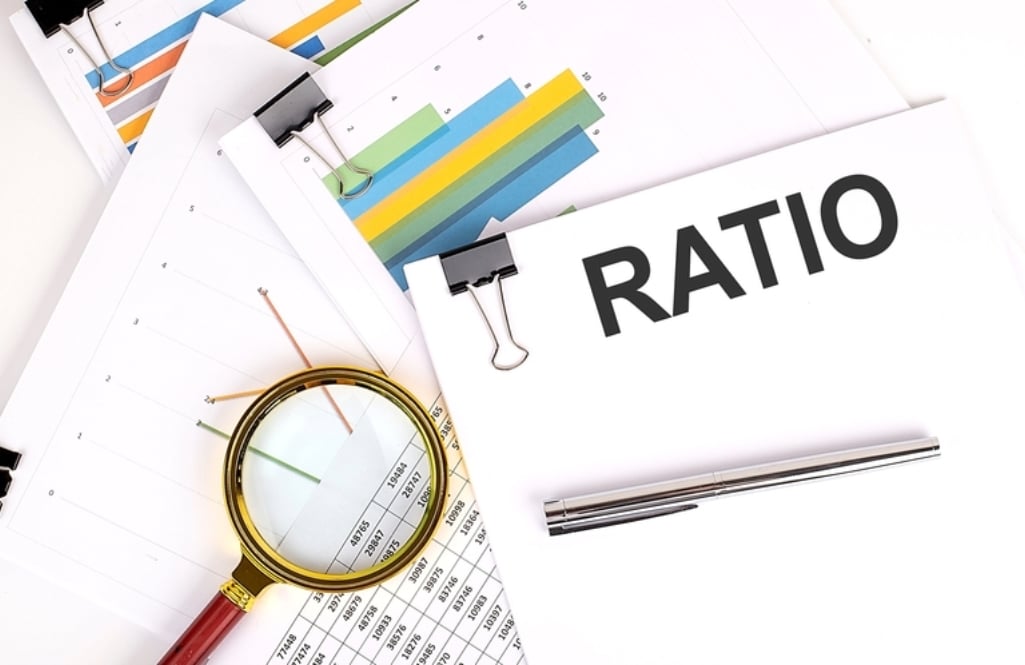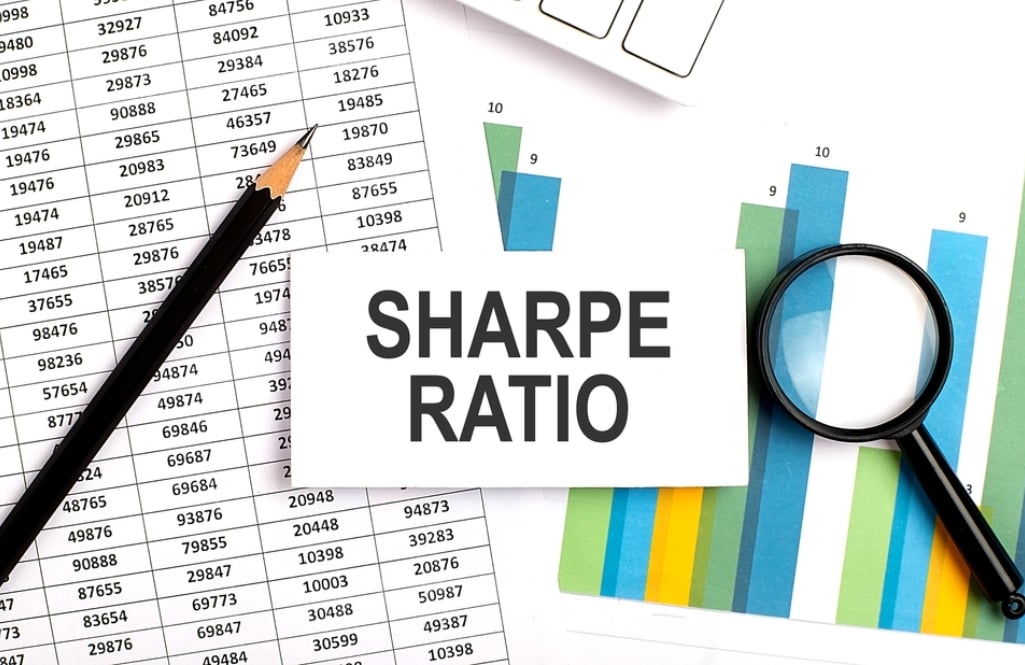The Sharpe Ratio and Treynor Ratio serve as critical tools in the world of investment. They help investors assess the risk-adjusted returns of their portfolios. Understanding these ratios can significantly influence investment decisions, guiding investors towards more informed choices.
This short article explores how each ratio works and how they differ.
Key takeaways
- Both the Sharpe and Treynor Ratios are used to understand an investment’s risk-adjusted return.
- The Sharpe Ratio divides the excess return by the investment’s standard deviation.
- The Treynor Ratio instead divides excess returns by the investment’s Beta.
What is the Sharpe Ratio?
The Sharpe Ratio measures the performance of an investment compared to a risk-free asset, after adjusting for its risk. It essentially tells you how much excess return you are receiving for the extra volatility of a riskier asset.
Formula to Calculate Sharpe Ratio:
Sharpe Ratio= Standard Deviation of Portfolio / Return of Portfolio−Risk-Free Rate
The risk-free rate often refers to the yield on Treasury bills, as they’re considered free of credit risk.
What is the Treynor Ratio?
American economist Jack Treynor developed this ratio. The Treynor Ratio also measures risk-adjusted returns but uses the beta of the portfolio as the risk measure. Beta assesses the sensitivity of an investment’s returns to the market as a whole.
What is a good Treynor ratio ?
There is no set level at which an investment becomes good or bad. A lower Treynor ratio one year could become very good the next if volatility dies down or returns increase, or a high ratio could become worse.
Treynor Calculation
The formula goes as follows:
Treynor Ratio= Beta of the Portfolio / Return of Portfolio−Risk-Free Rate
Sharpe vs Treynor Comparison
Both ratios aim to provide insights into the returns earned on investments beyond what Treasury bills offer, considering the risk inherent in the investment. The Sharpe Ratio uses standard deviation to gauge volatility. On the other hand, the Treynor Ratio relies on beta, focusing on market risk.
The Main Difference
The core difference lies in their risk measures. Sharpe Ratio uses standard deviation, making it suitable for diversified portfolios. Whereas Treynor Ratio uses beta, focusing on market risk and is more applicable to well-diversified portfolios.
Limitations
Both ratios have their limitations. The Sharpe Ratio doesn’t fully consider risk in portfolios with non-normal return patterns.
The Treynor Ratio assumes that investors hold diversified portfolios. And that beta is a complete measure of risk. However, this might not always be the case, especially with investments having a negative beta.


Which Ratio is Better?
Deciding whether the Sharpe or Treynor is better depends on the context. For diversified portfolios where market risk is a primary concern, the Treynor Ratio might provide more relevant insights.
However, for assessing individual securities or portfolios not fully diversified, the Sharpe Ratio’s broader risk measure can be more informative.
What is Better than Sharpe Ratio?
Some investors turn to the Information Ratio for a different perspective, comparing returns earned to a benchmark, rather than a risk-free rate, to assess the ability to generate excess returns from active management.
Sharpe Ratio vs Information Ratio?
Choosing between the Sharpe Ratio and Information Ratio depends on the investment’s objective. If the goal is to evaluate the reward for taking on additional volatility, the Sharpe Ratio is apt.
If the focus is on the excess returns generated over a benchmark, reflecting the skill of the portfolio manager, the Information Ratio becomes more relevant.
Is a higher Sharpe ratio good?


A higher Sharpe ratio is good because it indicates that the investment offers more excess return per unit of risk, making it a preferable choice for investors seeking to maximize their reward to volatility ratio
Jensen’s alpha vs Sharpe vs Treynor?
Jensen’s Alpha measures an investment’s excess return over what the Capital Asset Pricing Model (CAPM) predicts it should earn, based on its inherent risk. The Sharpe ratio evaluates the excess return per unit of total risk (volatility), while the Treynor ratio assesses the excess return per unit of market risk (beta). Essentially, Jensen’s Alpha focuses on performance relative to expected returns under CAPM, Sharpe ratio on total risk, and Treynor ratio on market risk.
How do you compare Treynor ratios?
When comparing Treynor ratios, look at the excess return per unit of market risk for different investments. A higher Treynor ratio indicates a more favorable investment decision, suggesting a better reward for each unit of market risk taken.
Calculating the Treynor ratio involves using the beta measure of the portfolio as a risk measure, similar to the Sharpe but specifically for market risk.
Differences between Sharpe and Treynor and Jensen’s Alpha?


The differences between Sharpe and Treynor ratios and Jensen’s Alpha mainly lie in their risk and performance measures.
The Sharpe ratio uses standard deviation to measure total risk, making it suitable for analyzing the overall risk-adjusted return.
The Treynor ratio uses beta to focus on market risk, making it ideal for diversified portfolios. Jensen’s Alpha evaluates an investment’s ability to generate excess returns compared to those predicted by CAPM, highlighting the portfolio manager’s performance.
Bottom Line
Both the Sharpe and Treynor Ratios offer valuable insights into the risk-adjusted performance of investments. But their applicability varies depending on the investment’s nature and the investor’s goals. Understanding these nuances can significantly enhance investment decisions.
- SEO Powered Content & PR Distribution. Get Amplified Today.
- PlatoData.Network Vertical Generative Ai. Empower Yourself. Access Here.
- PlatoAiStream. Web3 Intelligence. Knowledge Amplified. Access Here.
- PlatoESG. Carbon, CleanTech, Energy, Environment, Solar, Waste Management. Access Here.
- PlatoHealth. Biotech and Clinical Trials Intelligence. Access Here.
- Source: https://www.financebrokerage.com/treynor-ratio/



